Cast
Figaro: Roberto Tagliavini
Susanna: Pretty Yende
Count Almaviva: Ryan McKinny
Countess Almaviva: Guanqun Yu
Cherubino: Renée Rapier
Marcellina: Lucy Shaufer
Dr. Bartolo: Kristinn Sigmundsson
Don Basilio: Robert Brubaker
Barbarina: Vanessa Becerra
Antonio: Philip Cokorinos
Don Curzio: Joel Sorensen
Conductor: James Conlon
Production: Ian Judge
Scenery Designer: Tim Goodchild
Costume Designer: Dierdre Clancy
Lighting Designer: Mark Doubleday
Chorus Director: Grant Gershon
Choreographer: Chad Everett Allen, after Sergio Trujillo
LA Opera’s 2015 Figaro Trilogy has come to a close, ending with the work that’s arguably the masterpiece of all Figaro operas, Mozart’s Le Nozze di Figaro. The production, by LA Opera mainstay director Ian Judge, premiered in 2004, and this was its fourth revival. Well I remember seeing it back in 2006, with a cast headed by Ildar Abdrazakov’s Figaro and Barbara Bonney’s Susanna. I enjoyed it then and I enjoyed it just as much this time. It was a beautiful, sparkling production, and the performers were all first rate.
Tim Goodchild’s elegantly colorful rectangular sets depicted a castle that wouldn’t look out of place in the 18th century, but the equally colorful costumes updated the action to the 1950s. Ian Judge, in a response he was kind enough to send me after I emailed him a few questions, explained that they chose the ‘50s because it’s a “romantic” time in the public imagination and because the women’s full skirts mirror the silhouette of 18th century dress. Some critics, remembering that the story is supposed to take place in Spain, assumed that a parallel was being drawn between Franco’s regime and the ancient-regime, but Mr. Judge’s email confirmed what I’d already suspected, that he intended no such thing. Apart from the updating (which allowed for some fresh, funny stage business – e.g. the characters carrying flashlights in the final garden scene and Figaro accusingly shining his flashlight on all the women in the audience during “Aprite un po’ quegli occhi”), this was generally a traditional Figaro, in the best possible way. Lighthearted, exuberant and funny, yet not caricatured and without avoiding the work’s underlying depths. Probably the most “modern” aspect is the enhanced eroticism – nothing excessive, but still more horizontal canoodling than Mozart and da Ponte probably imagined. In particular, Cherubino’s crush on the Countess was shown to be very much requited. They engaged in heavy petting on her bed throughout the first half of Act II and shared a kiss at the end of “Voi che sapete,” making me wonder if they had already conceived La Mére Coupable’s Léon. I wasn’t sure if I agreed with that choice (it obviously cast a pall over the Count and Countess’s reconciliation, even amid the “happy ending” fireworks display) but it certainly felt fitting in this revival, with the Mere Coupable-inspired Ghosts of Versailles still fresh in LA operagoer’s minds.
I’ll admit that Figaro isn’t the easiest opera to stage in updated dress. While abuse of power is always a relevant subject whether the abuser is an ancient-regime count or a 21st century business mogul, the specific conflict we see, between an aristocrat and his legally powerless yet cunning servants, does reflect the 18th century, pre-Revolution. It’s probably for that reason that James Conlon’s program notes for this revival emphasized the work’s proto-feminist message more than its political message. The characters of Cherubino and Barbarina are also slightly awkward in updated productions. They don’t seem to be older than 13 or 14 (Cherubino’s voice is unchanged, he’s implied to still be growing, and Barbarina’s role was first sung by a 12-year-old), yet they’re both treated as objects of desire by the adult characters and Cherubino is considered old enough to become a soldier – not exactly in line with today’s laws or social mores. But in the end, those are minor quibbles. The vast majority of the opera’s themes are timeless, as is its humor and, of course, Mozart’s’ glorious music.
Since this revival was the grand finale of the Figaro Trilogy, and more or less the grand finale of the whole Figaro Unbound festival (one last performance of the children’s show Figaro Opera Tales followed it, but that was more of an epilogue than a grand finale), it was only fitting that the cast included plenty of the same singers who appeared in the first two installments. The Countess and Cherubino, Guanqun Yu and Renée Rapier, had sung the same roles in The Ghosts of Versailles – all the more reason why their smoldering mutual attraction was played up. Meanwhile, three other singers managed to appear in all three parts of the trilogy, playing different characters each time: Lucy Schaufer (Susanna in Ghosts, Berta in Barbiere and Marcellina here), Kristinn Sigmundsson (Louis XVI in Ghosts, Don Basilio in Barbiere and Dr. Bartolo here), and Philip Cokorinos (Suleyman Pasha in Ghosts, Bartolo in one performance of Barbiere and Antonio here).
Roberto Tagliavini’s Figaro was a strapping, commanding presence, conveying all the necessary outrage and wit with a magnificent bass voice. He was excellently matched by his bride, Pretty Yende’s adorable, gracefully feisty, warmly lyrical Susanna. As the Countess, Guanqun Yu offered a more darkly sumptuous voice than Yende’s and a dignified, endearing presence that did justice to the character’s moving effect, even though the production made her status as “the virtuous wronged wife” more ambiguous than the libretto does. By contrast there was little ambiguity about Ryan McKinney’s Count – he was every inch a raging, oversexed (yet genuinely sexy) petty despot, his richly powerful bass-baritone matching his personality. Meanwhile, Renée Rapier was a vividly boyish, goofy and horny Cherubino with a warm, beautiful mezzo voice, while Lucy Schaufer’s Marcellina, Kristinn Sigmundsson’s Bartolo and Robert Brubaker’s Basilio made a first-rate trio of supporting antagonists (though of course the former two switch to “our” side after a certain key revelation). Unfortunately, Marcellina and Basilio’s arias were cut. Vanessa Becerra’s Barbarina, Philip Cokorinos’s Antonio and Joel Sorensen’s Don Curzio flawlessly rounded out the cast. James Conlon’s conducting was strong from beginning to end, though as is often the case, I was too absorbed in the production and singers to take much note of his specific interpretation.
This was an excellent Nozze and a perfect finale for Figaro Unbound. I couldn’t be more grateful to the art institutes of LA for producing a citywide festival of all things “Figaro.” Throughout the past several months it’s been wonderful to discover obscure works, revisit old favorites, and explore Beaumarchais’s characters in all their guises and complexities. I hope that someday, LA revives this festival, or that some other city that I can visit offers its own version. The world of Figaro – a fictional world so rich and appealing that it’s inspired some fifteen operas, including two of the standard repertoire’s most revered masterpieces – is one I doubt I’ll ever get tired of exploring.




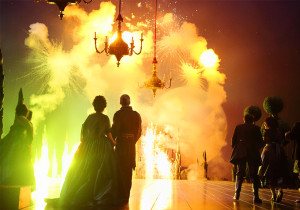
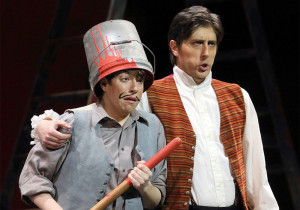
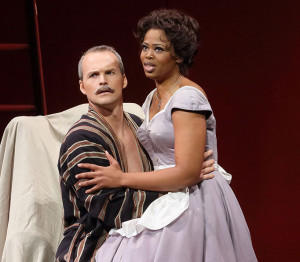
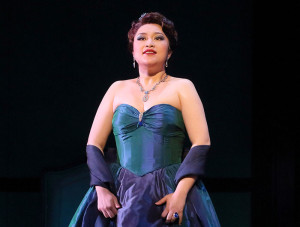
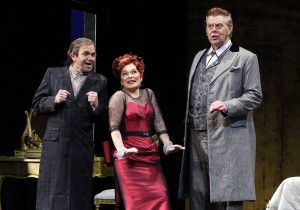
Clare
December 20th, 2015 at 22:24
Dear Pamina,
A brief note and question if I may.
Rameau’s “Hippolytus and Aricia” is surely one of the greatest first operas ever. The way it reveals its restrained beauty and splendid amalgam of rhythm, sonority, and poetry struck me as particularly gentle and gradual. Not a work to yield its strengths at first (or even 21st hearing). But as recently as 2 years ago at the Glyndebourne premiere I was surprised to read the words of one critic:
>”Musically, “Hippolytus and Aricia” falls curiously flat. In vain one waits for any of the voices to break free from the conversational monotony and understated politeness of the score. With very few exceptions, the work saunters on in a well-behaved manner which is undoubtedly elegant, but hardly touching. Not even Phaedra’s agonised soul-searching, delivered with great aplomb and dramatic gesture by Sarah Connolly, or the excellent Orchestra of the Age of the Enlightenment, conducted with usual precision by William Christie, or indeed the phenomenal Glyndebourne Chorus quite redeem what is, in essence, a very boring work”
Question:
Why do you think “Hippolytus and Aricia” has not become more popular with opera lovers? And why do the operas of Handel get so much more attention?
A few individuals tell me that they find something more human, spiritual and accessible in Handel’s work and that Rameau will always be for ‘special tastes’ but I cannot accept this.
Thanks,
Clare